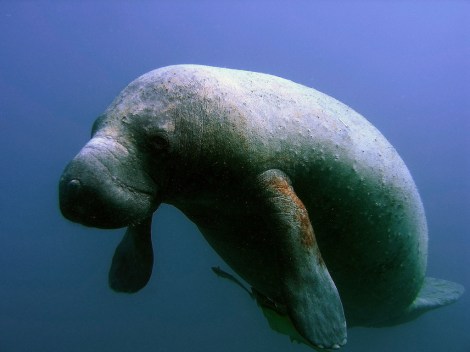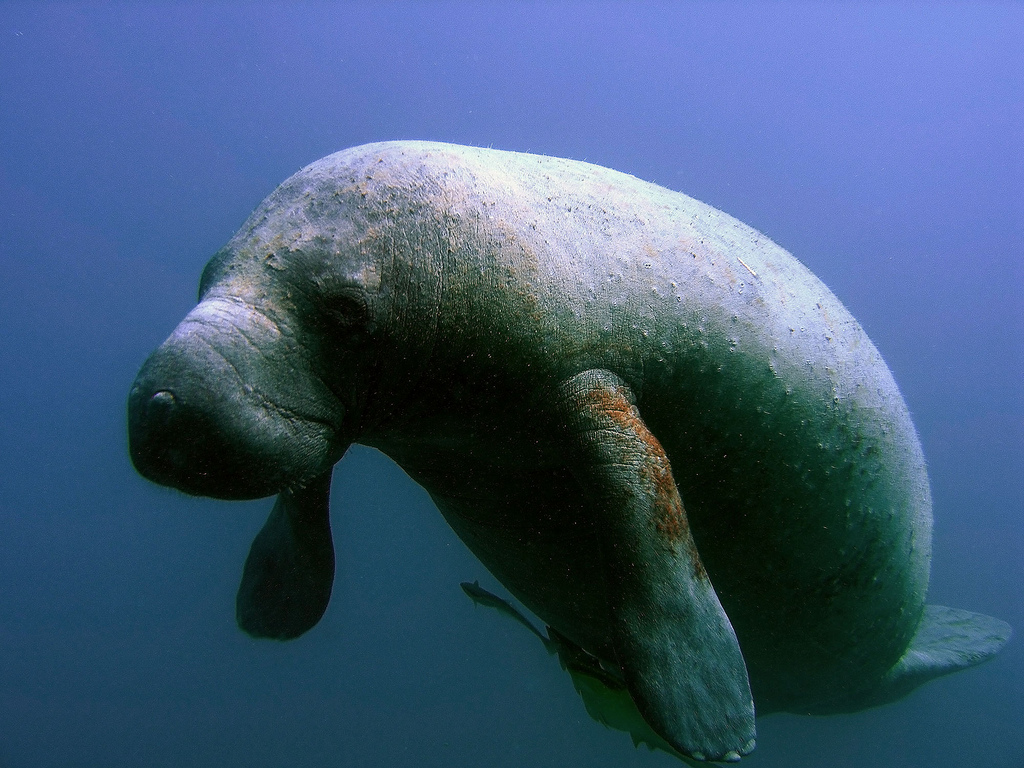
NOAA
This is a bad week for sea life. First we got word that hundreds of sea lion pups were washing ashore in California, way more than is normal for this time of year. Now, it looks like manatees are also in danger. These gentle living Tempur-Pedics are dying near both Florida coasts — off the southwest coast from a red tide algal bloom, and off the east coast from some kind of mystery disease.
The red tide deaths are tragic (manatees are already a threatened species) but not mysterious; Karenia brevis, the algal bloom that causes red tide, also acts as a neurotoxin in fish, birds, and mammals, including humans. Over 180 manatees have died so far, a record number for this time of year. But the eastern deaths are more troubling. They may also be due to algae — Mother Jones reports that the animals may be eating harmful algae out of desperation because their usual sea grass isn’t available. But that’s just a guess.
What’s not a guess is why there’s so much poisonous algae off Florida’s east coast; MoJo calls the water there “a Miracle-Gro of fertilizers, sewage, manure, and pet wastes that fuels algae blooms.” Back on the western side, though, the cause of the red tide is a little mysterious, and it’s not certain whether humans are to blame, says the Mote Marine Laboratory:
In contrast to the many red tide species that are fueled by nutrient pollution associated with urban or agricultural runoff, there is no direct link between nutrient pollution and the frequency or severity of red tides caused by K. brevis. Florida red tides develop 10-40 miles offshore, away from manmade nutrient sources. Red tides occurred in Florida long before human settlement, and severe red tides were observed in the mid-1900s before the state’s coastlines were heavily developed. However, once red tides are transported inshore, they are capable of using manmade nutrients for their growth.
It’s probably a fair bet that it’s all our fault somehow, though. I mean, not that gentle-souled sea creatures who never meant anyone any harm didn’t die sometimes before humans came along. Heck, they probably died a lot more often than rude vicious sea creatures with iron for blood. But I look at a lot of pictures of manatees (what? They’re like pillows with flippers!), and let me tell you, every one of them has a wounded look in their sad cow eyes that says “I know your kind will kill me, but I forgive you, because you don’t know any better.”

NRCA
Tell me I’m wrong.



